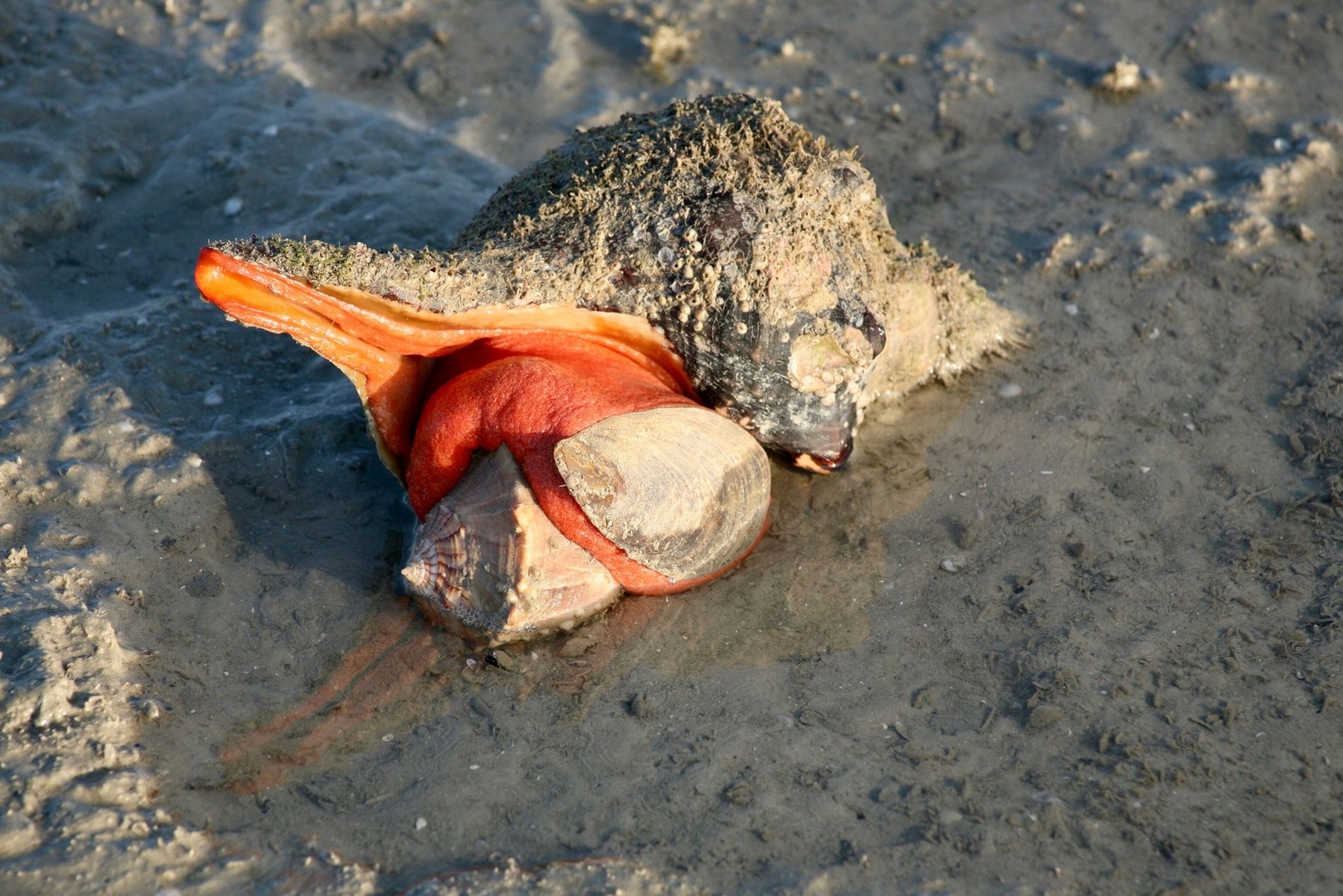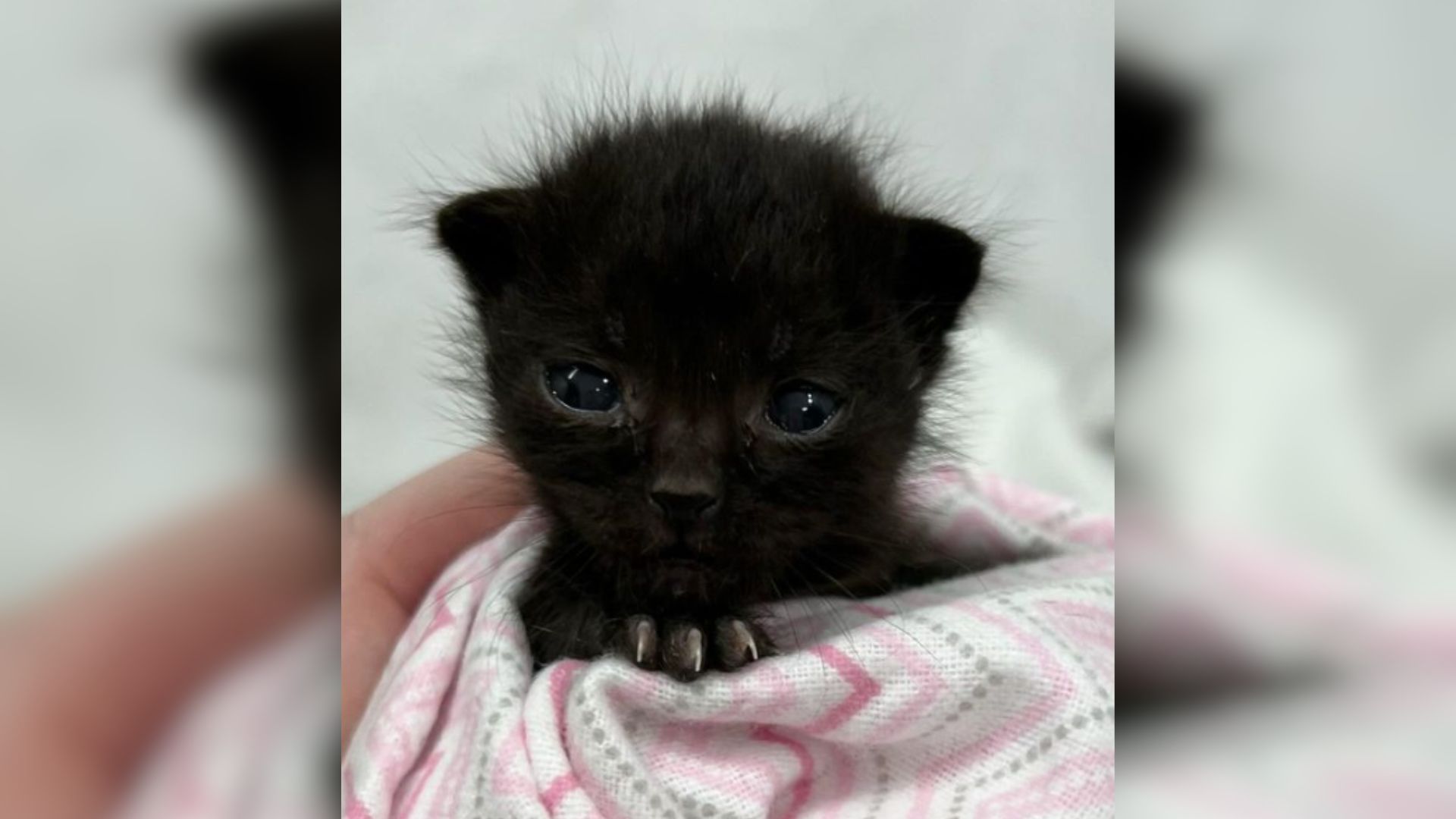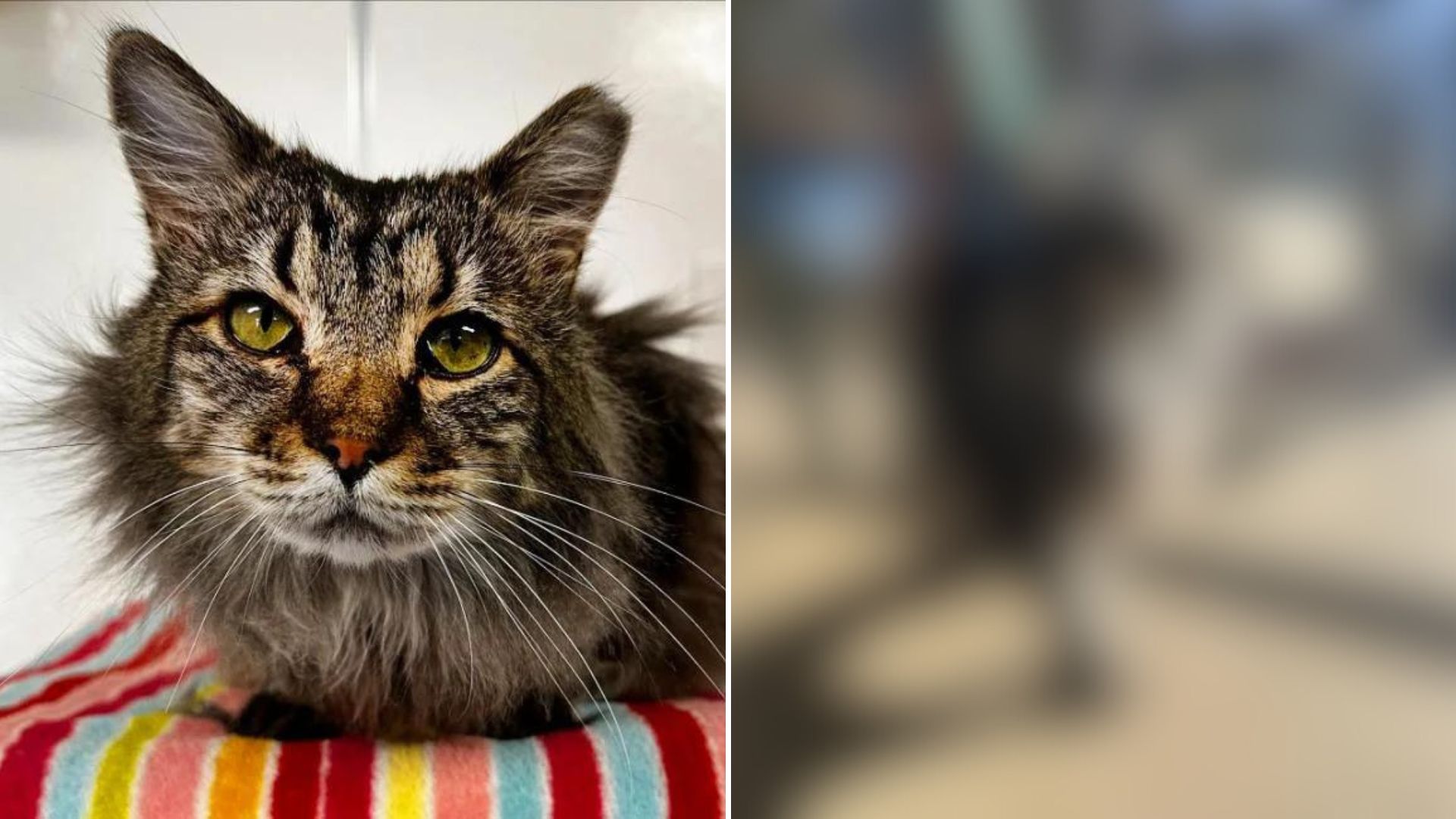A century of unregulated harvesting for its gigantic shell has left the horse conch far more vulnerable than scientists realized.

Horse conchs, the flashy marine snails that inhabit Florida’s colossal state seashell, live shorter lives and reproduce later than previously understood, according to new research that warns the Gulf of Mexico population could be nearing collapse.
Spindle-shaped shells that can grow to more than a foot and red-orange bodies bright as traffic cones make horse conchs some of the most eye-catching species on the beaches of the southeastern United States. They were once even bigger: Historic Florida photographs show tourists lugging horse conch shells half the length of a small child. Those sizes aren’t seen anymore, prompting researchers to ask why.

Scientists used sclerochronology—the shell version of dendrochronology, or tree-ring science—to investigate the lifespans of the animals whose off-white shells have been recorded as long as two feet from pointy top to funnel tip. The sizes had led some scientists to assume the predatory snails could live half a century or more, with females sending hundreds of thousands of tiny conchs into the sea over decades. The new research shows that’s not the case.
At seven to 10 years, “the actual lifespan is significantly shorter,” says Gregory S. Herbert, the University of South Florida marine ecologist who led the study, published on Wednesday in the journal PLOS ONE. The research further suggests that females spawn late in life. Since the largest horse conchs living today are both smaller and younger than the historic shells used in the study, “the largest females left in the wild could have few lifetime spawning events, if any,” the article warns, putting the Gulf population in crisis.

Earlier research showed the conchs’ sizes have declined over decades, “the universal sign that a tipping point is near,” says Herbert. Like other marine animals living near heavily populated coasts, horse conchs have lost considerable habitat to development and pollution, including favorite breeding grounds along mud flats and seagrass beds. Their Gulf habitat is also warming due to climate change, which scientists think further pressures the animals, based on the negative effects extra heat has on other big mollusks. But scientists say the more immediate threat shrinking their numbers and sizes is overharvesting, primarily for their highly sought-after shells.
The reported commercial harvest in Florida fell from a peak of 14,511 horse conchs in 1996 to 6,124 in 2000; to 1,461 in 2015; to just 67 in 2020, according to data from the Florida Fish and Wildlife Conservation Commission. Recreational harvest numbers are not known.

A child holds a horse conch shell on Florida’s Sanibel Island in 1948. Such sizes are rarely if ever seen these days, among either the empty shells or the living animals.
 Betty Boone, at the beach pouring water from a giant horse conch shell – Daytona Beach, Florida, 1948.
Betty Boone, at the beach pouring water from a giant horse conch shell – Daytona Beach, Florida, 1948.
An uncommon conch
While the study focused on Florida horse conchs, the species, Triplofusus giganteusis, lives from North Carolina down the Atlantic coast, around the Gulf, and south to Mexico’s Yucatán Peninsula. Ancient coastal people ate horse conchs, according to environmental archaeologist Karen J. Walker, and used the shell’s tough inner column for fishing sinkers. As apex predators that feed on smaller, more common sea snails such as lightning whelks, horse conchs were always less abundant than other mollusks.

In the past, however, they had a much larger range, according to Herbert’s longer-term research comparing the locations of dead shells in the Gulf with the living animals in their habitats today. The shrinking range could mean either that they are becoming rarer, or that some populations are already extinct, Herbert says. Scientists don’t have a good baseline for population numbers; a shell-collecting craze in mid-20th century America was well under way by the time the earliest horse conch studies began. In 1966, the St. Petersburg Shell Show offered free admission to everyone with a horse conch over 20 inches. Newspaper articles from the era show collectors and souvenir hunters holding record shells with the operculum—the animal’s hard “trap door”—intact, often a sign that the snail was collected live and discarded, and its operculum reattached to the shell.
Growing environmental awareness in the decades since has helped shell-dwellers, as ethical beachgoers leave live shells on the shore. A few coastal local governments in Florida, led by Sanibel Island, also have banned or limited live shelling. But along most of the coast, horse conchs are still intensely harvested for the aquarium market or curio trade, where single shells can fetch $100 or more.

The findings suggest the conchs would benefit from harvesting limits, including minimum sizes to allow at least one spawning and maximum sizes to protect the most productive breeding females. Much larger than the males, mother conchs are especially vulnerable to being killed for their shells.
Loving icons to death

The new research is as convincing as it is urgent, says malacologist José H. Leal, science director and curator at the Bailey-Matthews Museum and editor of The Nautilus, one of the oldest scientific journals of mollusks. While it’s a challenge to get people excited about protecting squishy mollusks, the horse conch makes a worthy cause, says Leal, who was not involved in the study. “It’s visible. It’s majestic. It’s the state shell.”
The Florida Legislature designated the horse conch the state seashell in 1969. Members of the Palm Beach Shell Club placed a shell on the desk of each of Florida’s 160 lawmakers on the day of the vote. Today, it joins a number of Florida state symbols driven to the edge by the humans who revere them. The state animal, the Florida panther, is near extinction, pressured by hunting and habitat loss. The state marine mammal, the manatee, is suffering a mass die-off linked to the pollution-caused loss of its seagrass food source. The state tree, the sabal palm, is falling to a fatal disease spread by an invasive pest—and dying out in coastal forests due to soil salinity caused by sea level rise.
The study highlights how sclerochronology can help fill in mollusks’ life histories without collecting and killing increasingly rare animals, Herbert says. Despite limited population data, the results make clear horse conchs deserve protection, he says. “It’s like a wobbling vase that hasn’t fallen yet, but could if no one catches it.”





